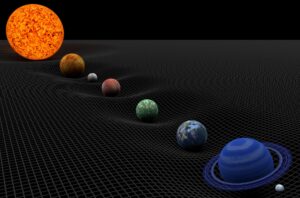Particle Physics: Unveiling the Mysteries of the Universe
Particle physics, often referred to as high-energy physics, is a branch of science that delves deep into the fundamental building blocks of the universe. It explores the smallest entities in existence, the particles that makeup everything we see and don’t see. In this article, we will embark on a journey through the world of particle physics, uncovering its key concepts, historical milestones, and the remarkable instruments and experiments that have shaped our understanding of the universe.
The Particle Zoo: An Introduction to Elementary Particles
The world of particle physics is often described as a “zoo” due to the dizzying array of particles it encompasses. These particles can be broadly categorized into two groups: elementary particles and composite particles.
Elementary particles are the most fundamental entities in the universe. They are indivisible and do not consist of smaller constituents. There are two main categories of elementary particles:
- Fermions: These are the building blocks of matter. Fermions can be further divided into quarks and leptons. Quarks are the constituents of protons, neutrons, and other hadrons, while leptons include familiar particles like electrons, muons, and neutrinos. Quarks carry a fractional electric charge, while leptons carry integer electric charges.
- Bosons: These are force carriers, responsible for mediating the fundamental forces of nature. The most well-known boson is the photon, which mediates electromagnetism. Other bosons include the W and Z bosons, responsible for the weak nuclear force, and the gluon, which mediates the strong nuclear force.
Composite particles, on the other hand, are made up of quarks and can be further divided into mesons and baryons. Mesons are composed of one quark and one antiquark, while baryons consist of three quarks.
Historical Milestones in Particle Physics
The journey of particle physics is marked by numerous breakthroughs and discoveries. Here are some of the most significant historical milestones:
- Discovery of the Electron (1897): J.J. Thomson’s experiments with cathode rays led to the identification of the electron, the first elementary particle to be discovered.
- Rutherford’s Gold Foil Experiment (1909): Ernest Rutherford’s famous experiment revealed the existence of the atomic nucleus, paving the way for the understanding of protons and neutrons.
- Development of Quantum Mechanics (1920s): Quantum mechanics, formulated by physicists like Werner Heisenberg and Erwin Schrödinger, revolutionized our understanding of the behavior of particles on the atomic and subatomic scales.
- Discovery of the Neutrino (1956): The existence of the neutrino, an elusive and nearly massless particle, was confirmed by Frederick Reines and Clyde Cowan.
- Quark Theory (1960s): The theory of quarks, proposed by Murray Gell-Mann and George Zweig, explained the composition of hadrons and introduced the concept of “color charge.”
- Discovery of the Higgs Boson (2012): The Large Hadron Collider (LHC) at CERN confirmed the existence of the Higgs boson, a particle that endows other particles with mass.
Fundamental Forces and Particle Interactions
In particle physics, understanding the interactions between particles is crucial. There are four fundamental forces in the universe, each mediated by specific particles:
- Gravitational Force: This force is responsible for the attraction between masses and is described by the theory of general relativity. The mediator particle, called the graviton, has not been observed yet.
- Electromagnetic Force: The electromagnetic force is responsible for interactions between charged particles. Photons are the force carriers that transmit electromagnetic interactions.
- Weak Nuclear Force: The weak nuclear force governs processes like beta decay. It is mediated by the exchange of W and Z bosons.
- Strong Nuclear Force: The strong nuclear force holds quarks together within protons, neutrons, and other hadrons. It is mediated by gluons.
The unification of these forces is one of the primary goals of particle physics, and various theories, such as the Grand Unified Theory (GUT) and the Theory of Everything (TOE), aim to explain how these forces were once a single, unified force during the early moments of the universe.
Particle Detectors and Accelerators
The study of particles requires powerful instruments and accelerators that can create high-energy collisions to probe the smallest scales of matter. Here are some key devices and accelerators used in particle physics:
- Particle Detectors: These instruments are used to detect and measure the properties of particles produced in collisions. Examples include the Geiger-Müller counter, scintillation detectors, and calorimeters.
- Cyclotrons and Synchrotrons: These machines accelerate charged particles to high energies using magnetic fields. Cyclotrons and synchrotrons have been pivotal in discovering new particles and probing the structure of matter.
- Linear Accelerators (Linacs): Linacs accelerate particles in a straight line. They are often used as the initial stage of acceleration before particles are injected into circular accelerators.
- Large Hadron Collider (LHC): The LHC at CERN is the world’s largest and most powerful particle accelerator. It played a pivotal role in discovering the Higgs boson and continues to push the boundaries of particle physics.
The Role of Symmetry in Particle Physics
Symmetry plays a central role in understanding the laws of particle physics. Symmetry principles guide the formulation of theories and the prediction of particle properties. Some essential symmetries in particle physics include:
- Symmetry of Space and Time: The laws of physics are invariant under translations in space and time. This principle is encapsulated in Noether’s theorem, which links symmetries to conserved quantities.
- C-Symmetry (Charge Conjugation): C-symmetry involves the transformation of particles into their corresponding antiparticles. It is related to the conservation of charge.
- P-Symmetry (Parity): Parity transformation reflects the spatial coordinates of a system. It was once believed that the weak nuclear force violated parity conservation until the discovery of the weak neutral current interaction.
- CP-Symmetry: CP-symmetry combines charge conjugation and parity transformations. Violation of CP-symmetry has been observed in certain particle interactions, providing insight into the matter-antimatter asymmetry in the universe.
Beyond the Standard Model
While the Standard Model of particle physics has been remarkably successful in explaining the behavior of elementary particles and their interactions, it is not a complete theory. Several unresolved questions and mysteries remain, driving the search for physics beyond the Standard Model:
- Dark Matter: Observations of the cosmos suggest the existence of dark matter, a mysterious, invisible substance that does not interact with electromagnetic forces. Its nature remains one of the most significant puzzles in modern physics.
- Dark Energy: The expansion of the universe is accelerating, and this phenomenon is attributed to dark energy. Understanding the nature of dark energy is another major challenge in cosmology and particle physics.
- Neutrino Masses: The Standard Model originally assumed that neutrinos were massless, but experiments have shown that they do have mass. The mechanism behind neutrino mass remains unknown.
- Gravity in the Quantum Realm: Combining the principles of quantum mechanics and general relativity into a single, coherent theory, such as a Theory of Everything (TOE), is a long-standing goal of theoretical physics.
Conclusion
Particle physics has taken us on a remarkable journey into the heart of matter, revealing the intricacies of the universe’s fundamental building blocks. From the discovery of electrons to the exploration of the Higgs boson, this field has provided profound insights into the nature of reality. Yet, it is also a discipline facing many mysteries and questions, pushing the boundaries of human knowledge and technology.
As we look to the future, particle physics continues to be a beacon of discovery, offering the promise of unlocking some of the universe’s deepest secrets. With ongoing experiments, new accelerators, and theoretical breakthroughs, we can anticipate even greater revelations about the nature of the cosmos and our place within it. Particle physics remains a testament to human curiosity, ingenuity, and the relentless pursuit of understanding the universe at its most fundamental level.

